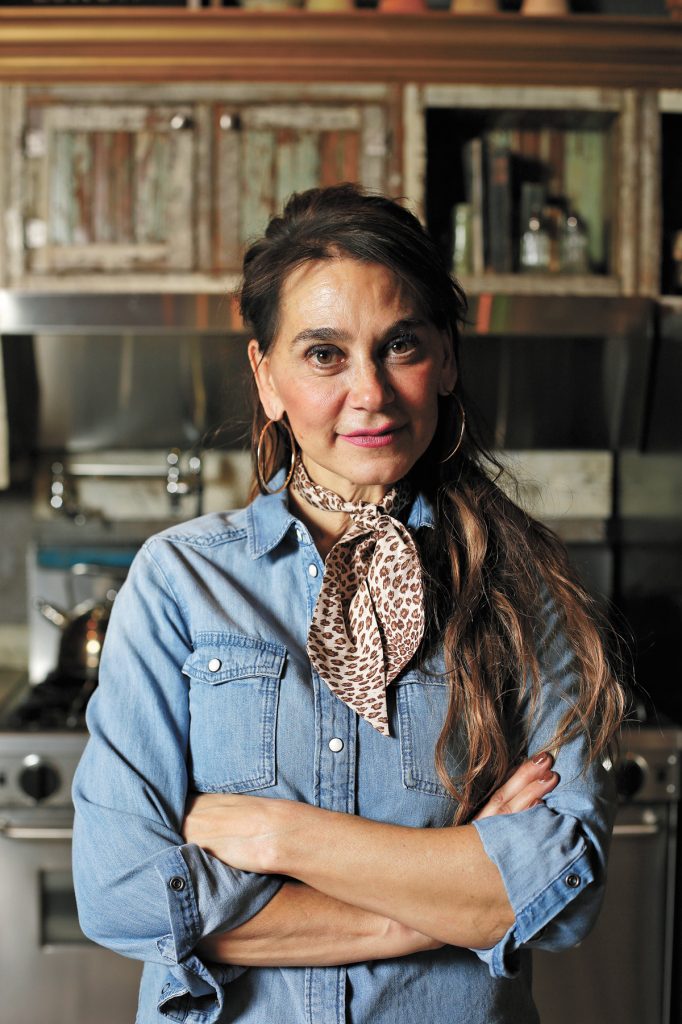
Says Chaps owner Celeste Shaw: “I think I’ve seen both sides of it from the health care perspective and as a business owner, and I still come to the same conclusion at the end of every day: safety first.”
With cold weather fast approaching, Spokane County restaurants brace for indoor season
For many restaurants, scrambling to expand patio space or create it from scratch seemed like the way to survive the hardships of 2020 and a global pandemic. That was way back this spring and early summer, when the weather was just warming up outside and it seemed like things would surely be better by the time fall and winter came along.
But as the weather gets close to turning cold again, Spokane County restaurants remain limited to 50 percent capacity, and that outdoor dining that has been key to the bottom line this summer will go away for many places.
While there could be a resurgence in takeout and family-style meals for some places, the fast casual restaurants that were best set up for that style when the pandemic began are also the least likely to struggle with the transition back to cold weather this fall.
Instead, the Washington Hospitality Association expects the restaurants that will struggle the most are those with full service and those independently owned places without a larger chain to rely on, explains association CEO and President Anthony Anton.
“The scary news is that winter is coming,” Anton says. “Restaurants are not profitable at 50 percent capacity with single household rules, and we’re going to lose all outdoor dining here soon. That has a lot of people panicked and worried.”
On top of that, federal loans that were part of the Paycheck Protection Program have run out for many, and there’s still little clarity for many on how to apply for forgiveness.
That’s left a lot of business owners around the state worried about what comes next, Anton says.
On Oct. 6, Gov. Jay Inslee announced updates to the state’s restarting phases that address some of the concerns. Effective immediately, restaurants were given the go-ahead to serve alcohol until 11 pm instead of 10 pm. Indoor dining may now allow people from different households, and those tables can hold up to 6 people for counties in Phase 2 (like Spokane County) and up to 8 people for those in Phase 3.
Other changes the association would like to see include allowing up to 75 percent capacity in Phase 3, and with that, enabling creative solutions with the 6-foot spacing rule. One option might be reopening limited bar top seating that could be spread apart. Otherwise, Anton says, some small restaurants won’t be able to expand above the 50 percent capacity even if the other rules seem to suggest they could.
Short of major changes, the association predicts that a third of Washington’s restaurants could close this year.
“Pre-COVID, if you spent $100 in a restaurant, a restaurant made $4. I know people think that those who own a business must have jets and mansions and stuff, but the reality is most of our restaurant owners are blue-collar people who are taking a run at a dream,” Anton says. “This is a tough business, that’s why the failure rate in good times is so high.”
But in bad times, in pandemic times, not being able to serve more people will push many to the breaking point, he warns.
For CHAPS, winter has always meant closing down the outdoor patio space that’s so popular in summertime and moving people indoors, says owner Celeste Shaw.
But the restrictions on table sizes have been difficult to navigate, she says, as it seems illogical to make a family with four adults and three children, for example, split across two tables. She’d like to see some more flexibility for larger tables that include the same family, at least.
“I think you should be able to have groups of 10 so families can stay together, or groups that show up together can sit together,” Shaw says. “I understand the initial restrictions, but the key is we have to, at some level, start progressing or people will [break] those rules themselves and then there’s no control.”
However, as a nurse whose husband is also working on a vaccine for COVID-19, Shaw says not only has she always had extremely high standards for cleanliness in the restaurant, but she believes masking and sanitation rules remain key.
“I think I’ve seen both sides of it from the health care perspective and as a business owner, and I still come to the same conclusion at the end of every day: safety first,” Shaw says. “If you were breathing cancer, you’d put a mask on, and this virus is a killer. A little thin piece of cloth on your face is really not that big of a deal if you think outside of yourself.”
Shaw isn’t alone in adhering to strict safety standards. In fact, the newly formed Spokane Hospitality Coalition and SAVE 509 are working hard to make sure people know just how seriously restaurant owners are taking precautions to ensure safe dining, says Derek Baziotis.
As the chair of the Spokane chapter of the statewide Hospitality Association, and a restaurant owner himself with BENE’S in Cheney, Baziotis says he hopes people will follow the three W’s: Wear a mask, wash your hands, and watch your distance.
“We are doing everything we can to keep it safe in our establishments,” Baziotis says. “Let’s get some butts in seats, let them know it is safe, and let them know we’re following the guidance.”
However, for some diners it may still be too risky to eat indoors, in which case, purchasing gift cards and takeout from favorite restaurants may be helpful, too.
Many restaurants got creative this spring with unique takeout offerings for customers who couldn’t dine in, and this fall could see a resurgence in creativity.
“I saw a lot of really cool ideas,” Baziotis says. “I’m going to be really interested to see what business owners do.”
Shaw is among those who will be taking a new creative approach, as Chaps is set to start offering small baking classes on the days the restaurant is closed.
“For people who are afraid to come into the bakery, we’re gonna do some really small groups of 8 people or less because we can do it on days we’re closed and separate them out with an instructor,” Shaw says.
Classes could include lessons on pie making, cookies, seasonal breads and more, and information for how to sign up will be posted on Chaps’ social media and website.
Aside from owners getting creative, Anton says that he’d like to see more work from the state and federal governments on a new round of relief packages for those affected.
“How do we make sure we have a great restaurant and lodging scene in our future knowing that no matter what we do, we’ll have fewer restaurants, hotels, and entertainment facilities than we did in January of this year?” Anton asks. “How do we keep that key part of our community culture come next spring?”
Lastly, for the community’s part, Anton says the best thing to do is continue supporting local businesses throughout the winter and wear a mask to prevent the spread of the virus.
“You want to save a small business? You want to save jobs? We know masking works,” he says. “The faster we can knock this down, the faster we can turn back the rules that make running a business hard, and the faster we get back to normal.”

